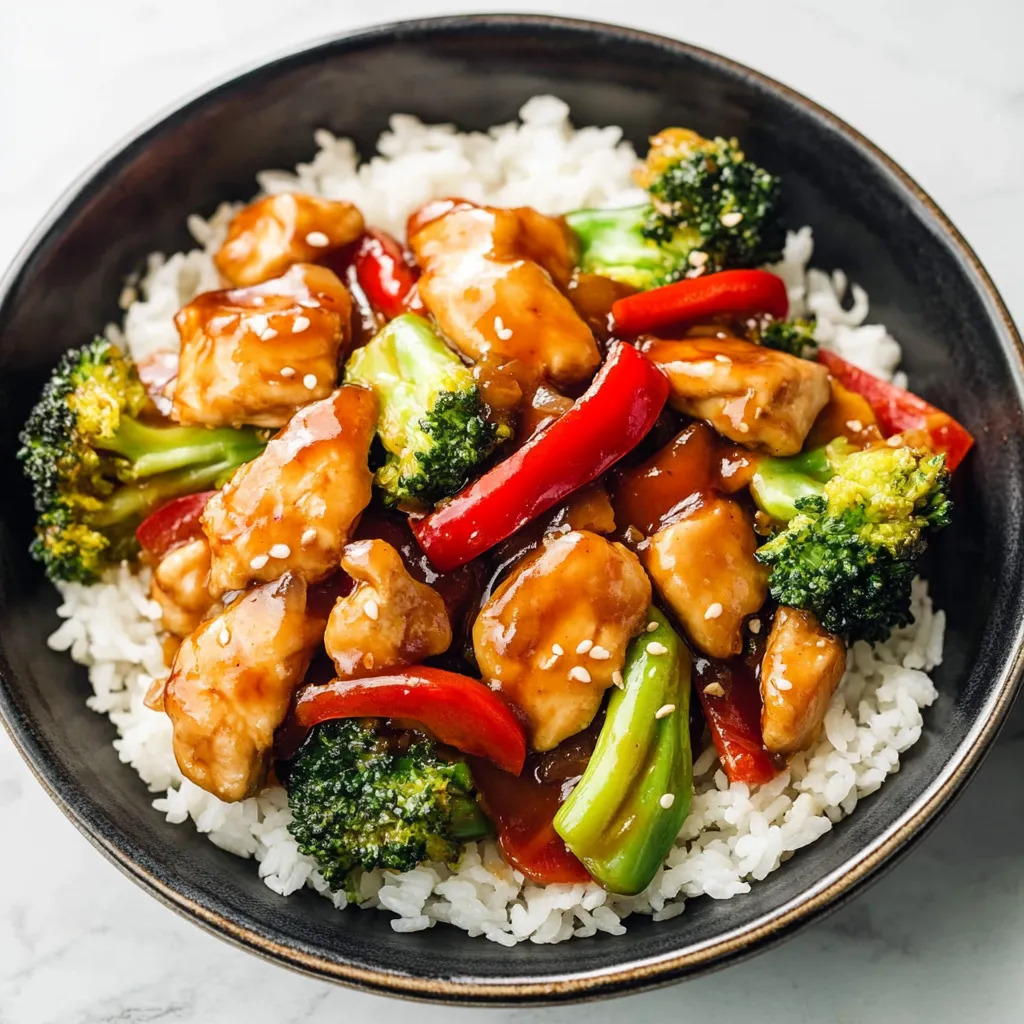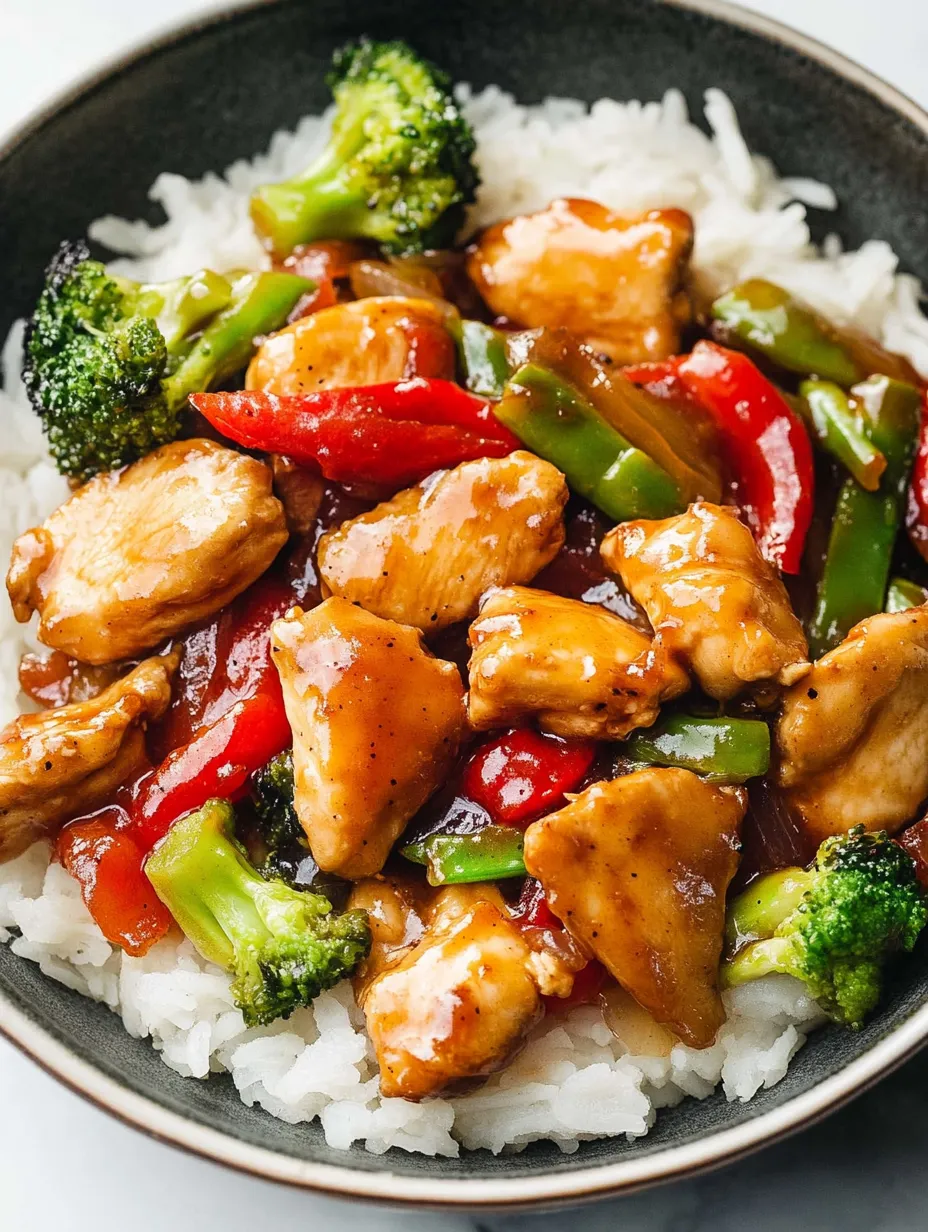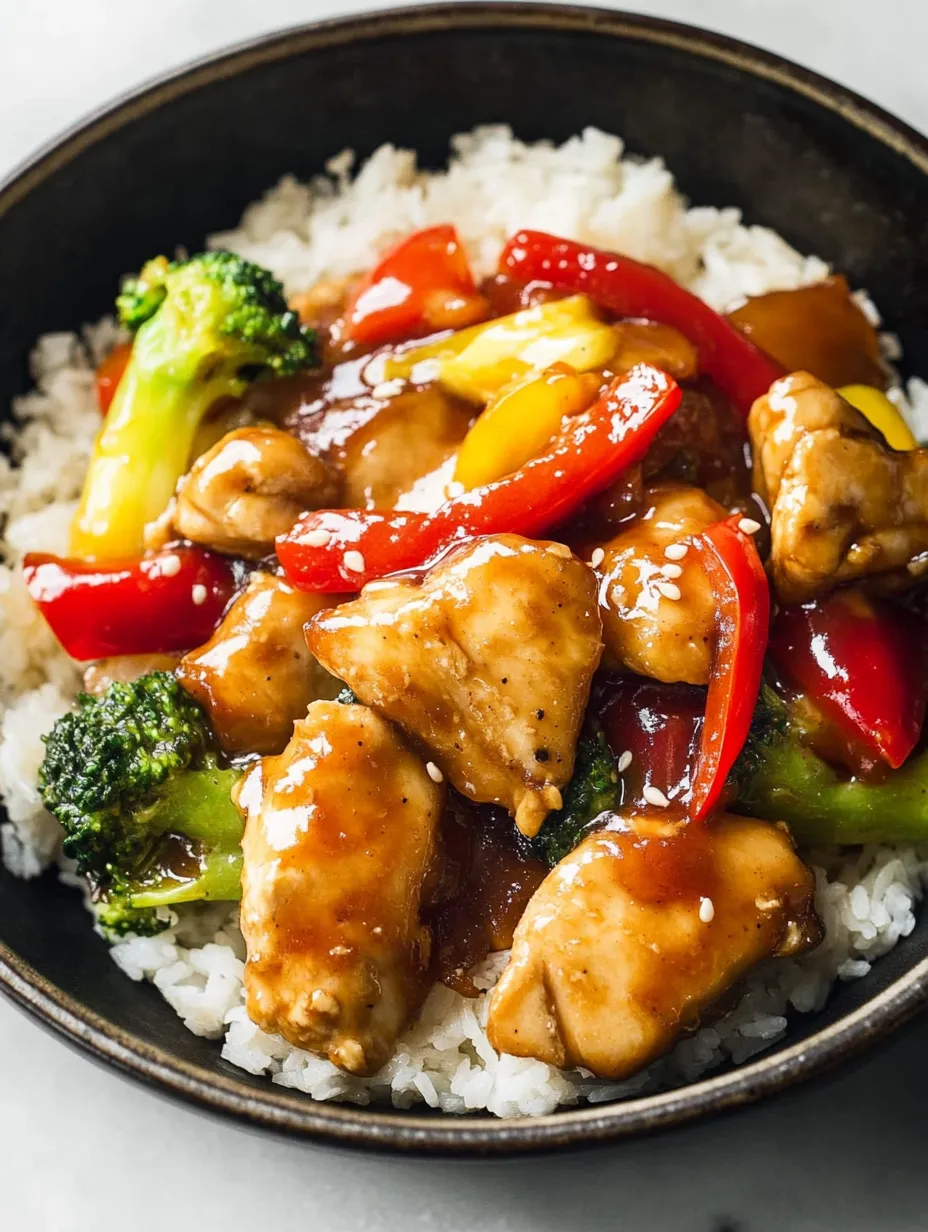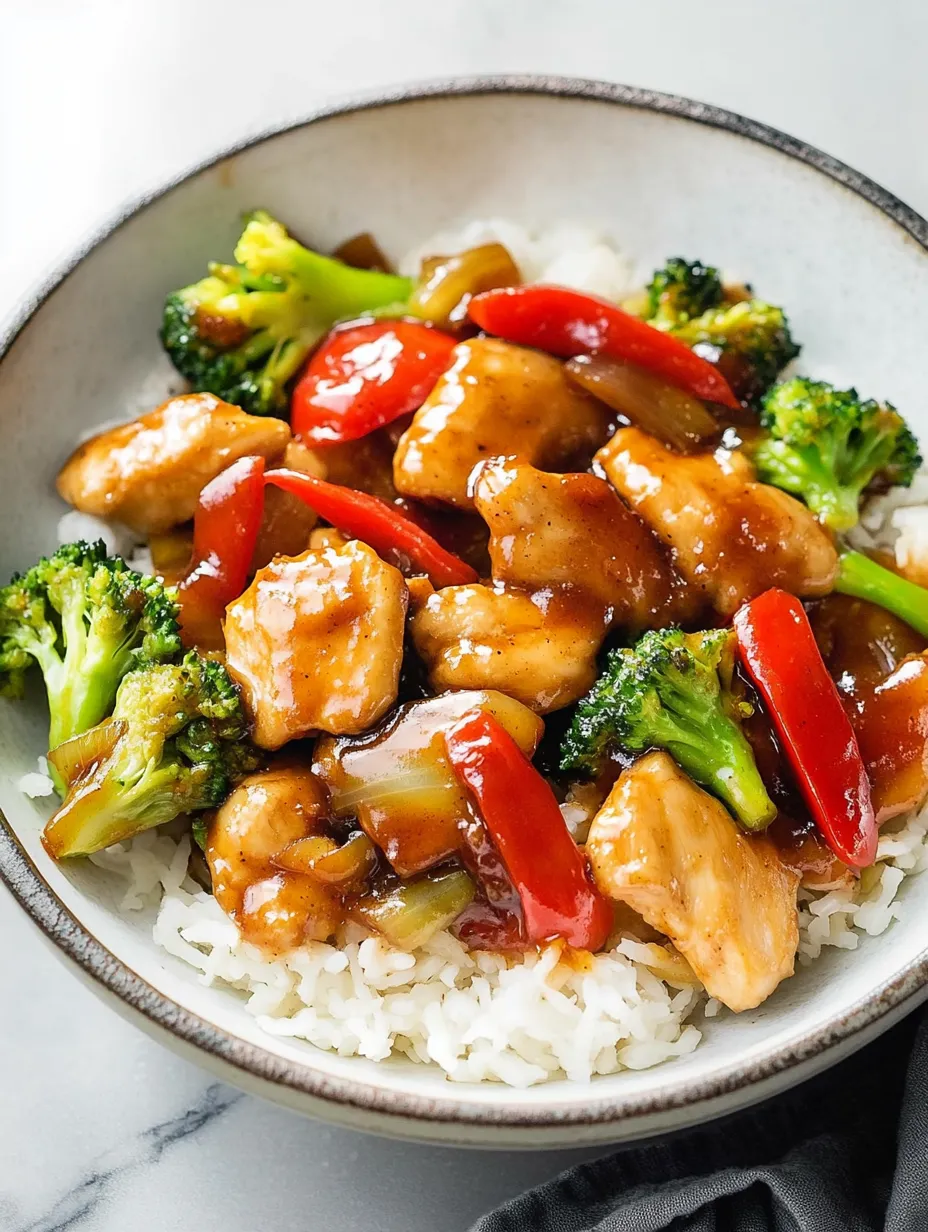 Pin it
Pin it
Tender chicken pieces surrounded by vibrant vegetables and coated in a glossy homemade teriyaki sauce creates a restaurant quality meal right in your own kitchen. This teriyaki chicken stir fry balances sweet and savory flavors in perfect harmony while delivering nutritious vegetables and satisfying protein in every forkful. The combination of crisp vegetables and juicy chicken pieces wrapped in that signature sticky sauce provides both textural contrast and flavor depth that keeps this dish in regular rotation on dinner tables worldwide.
Family Favorite Features
- Restaurant quality results: Authentic flavors without the takeout price tag
- Nutritional powerhouse: Protein and vegetables combine for complete nutrition
- Weeknight friendly: From preparation to table in just 35 minutes
Last month when my sister visited with her notoriously picky children, this dish disappeared without a single complaint despite being loaded with vegetables. The sweet teriyaki sauce works magic on convincing vegetable skeptics to clear their plates while still satisfying more sophisticated palates with its complex flavor profile.
Quality Components
Essential Ingredients
- Boneless chicken breast: This lean protein source provides the perfect canvas for soaking up the flavorful sauce. Slicing it against the grain ensures tenderness in the final dish while uniform pieces cook evenly throughout.
- Fresh vegetables: Crisp broccoli florets, sweet bell peppers, and aromatic onions create color contrast and nutritional variety. Their different textures add interest to each bite while their natural sweetness complements the sauce.
- Mirin: This sweet Japanese rice wine forms the authentic foundation of proper teriyaki flavor. Its subtle sweetness and unique flavor profile cannot be perfectly replicated with substitutes, though decent alternatives exist when necessary.
- Soy sauce: This fermented ingredient provides the essential umami depth and saltiness that balances the sweetness in teriyaki sauce. Choose regular rather than light soy sauce for appropriate color and flavor intensity.
- Fresh ginger and garlic: These aromatic ingredients add brightness and complexity that elevates homemade sauce beyond bottled versions. Their distinctive flavors cut through the sweetness and create authentic Asian flavor notes.
Cooking Method
Preparation Process
- Prepare With Purpose
- Begin by organizing all ingredients before heating your pan. This critical step ensures smooth execution once cooking begins, as stir frying moves too quickly for measuring or chopping during the process. Whisk together sauce ingredients in a separate bowl until completely smooth, ensuring the cornstarch fully dissolves without lumps for proper thickening later.
- Season With Intention
- Cut chicken into uniform bite sized pieces approximately 1 inch in size, allowing for consistent cooking times. Season chicken directly with garlic powder and black pepper before tossing with cornstarch. This direct seasoning ensures flavor penetration while the cornstarch coating creates a protective barrier that seals in juices and provides surface texture for the sauce to cling to.
- Master Heat Management
- Heat your skillet until very hot before adding oil, which should shimmer immediately when added. This proper preheating creates the ideal environment for quick searing rather than steaming. Work in batches when cooking chicken, maintaining sufficient space between pieces to allow proper browning and prevent excessive moisture release that would inhibit caramelization.
- Respect Vegetable Integrity
- Add onions first to the hot pan, allowing them to soften slightly and develop sweetness before introducing more delicate vegetables. Add broccoli and bell peppers together, cooking only until they reach tender crisp texture that maintains their vibrant color and nutritional value. This careful timing prevents the mushy overcooked vegetables that often plague homemade stir fries.
- Create Sauce Magic
- Return chicken to the pan with the vegetables before adding your prepared sauce. The sauce should be poured around the sides of the pan rather than directly onto the ingredients, allowing it to heat quickly against the hot surface. Let it bubble briefly while stirring constantly until it thickens to a glossy consistency that perfectly coats each piece of chicken and vegetable.
- Time Your Finish
- Remove the pan from heat the moment the sauce reaches your desired thickness, as it will continue thickening slightly from residual heat. This precise timing prevents the sauce from becoming too thick and gummy or reducing too much and becoming overly concentrated in flavor.
- Serve Immediately
- Transfer your completed stir fry directly to serving plates or atop freshly cooked rice without delay. This immediate service ensures optimal temperature and texture contrast between the components, delivering that restaurant quality experience at your dining table.
 Pin it
Pin it
My grandmother taught me that patience during preparation leads to excellence in execution. Taking those extra few minutes to properly organize ingredients before turning on the heat makes the actual cooking process flow smoothly and results in noticeably better flavor development and texture in the finished dish.
Serving Suggestions
Complete Your Plate
Transform this stir fry into a memorable meal with thoughtful accompaniments. Serve over steamed jasmine rice that provides the perfect neutral base to soak up the flavorful sauce. For a lower carb option, consider cauliflower rice or spiralized vegetable noodles that maintain the light, fresh quality of the dish. Add textural contrast with toppings like toasted sesame seeds, crisp bean sprouts, or chopped cashews sprinkled just before serving. For a complete Asian inspired spread, accompany with simple miso soup and a side of quick pickled cucumber salad that provides palate cleansing acidity between bites.
 Pin it
Pin it
Creative Variations
Personalized Adaptations
This versatile foundation welcomes thoughtful modifications to suit different preferences. Create a spicy version by adding sriracha or red pepper flakes to the sauce mixture. Develop deeper umami notes by incorporating sliced mushrooms with the other vegetables. Transform the protein by substituting thinly sliced beef, pork, or firm tofu for the chicken. Introduce seasonal vegetables based on what looks freshest at your market, such as snow peas, baby corn, or water chestnuts that add distinctive texture. For those who enjoy extra sauce, simply double the sauce ingredients to create more of that irresistible coating for the rice beneath.
Storage Strategy
Maximize Freshness
Preserve leftover stir fry properly to enjoy almost identical quality on subsequent days. Store cooled leftovers in airtight containers in the refrigerator where they maintain optimal flavor and texture for 3-4 days. Reheat gently in a skillet over medium low heat rather than microwave for best texture preservation, adding a small splash of water if the sauce has thickened too much during storage. For planned leftovers, consider slightly undercooking the vegetables initially so they don't become too soft when reheated. If freezing portions for longer storage, accept that vegetable texture will soften somewhat upon thawing but flavor will remain excellent for quick future meals.
 Pin it
Pin it
I discovered the true secret to restaurant quality stir fry during a cooking class years ago where the chef emphasized the importance of extremely high heat and rapid cooking. What was taking me 30 minutes of continuous stirring suddenly became a 5 minute process with significantly better results. This technique transformation changed my relationship with homemade Asian cooking and eliminated our regular takeout habit completely.
Frequently Asked Questions
- → Can I use different vegetables in this stir fry?
- Absolutely! This recipe works great with any stir-fry friendly vegetables like snow peas, carrots, mushrooms, zucchini, or snap peas. Just adjust cooking times as needed - harder vegetables need more time, tender ones need less.
- → What can I substitute for mirin?
- If you don't have mirin, use 2 tablespoons of dry sherry plus 1 tablespoon of sugar, or 3 tablespoons of sweet marsala wine. In a pinch, you can also use 3 tablespoons of white wine with an extra teaspoon of sugar.
- → Can I prep this ahead of time?
- Yes! Chop all vegetables and chicken up to 24 hours ahead and store separately in the refrigerator. You can also mix the sauce ingredients ahead of time and refrigerate in a sealed container until ready to use.
- → Is there a way to make this gluten-free?
- Yes, simply use tamari or certified gluten-free soy sauce instead of regular soy sauce. Double-check that your chicken broth is also gluten-free, and you're all set!
- → Why coat the chicken in cornstarch?
- The cornstarch coating serves two purposes: it helps create a light, crispy exterior on the chicken when you brown it, and it also helps protect the chicken from drying out during cooking, keeping it tender and juicy.
